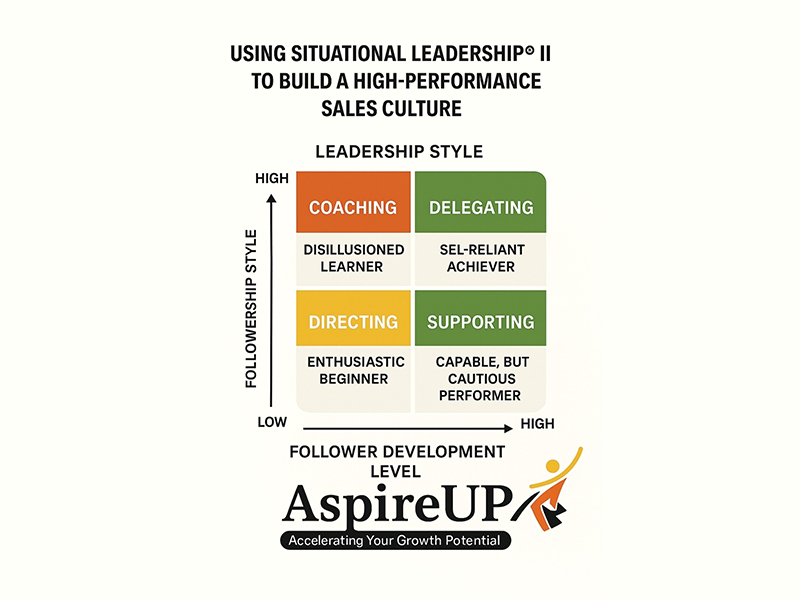I first discovered Situational Leadership by Ken Blenchard in his book the ‘One Minute Manager’ over a decade ago. As a sales leader, this model was my compass north when it comes to mapping my teams development needs and adapting my leadership style to fit them.
Yes you heard that right. One Style Does Not Fit All Folks but You Probably Already Know That!
High-performance sales teams don’t just happen—they are coached, guided, and developed.
SLII reminds leaders that one size doesn’t fit all—especially when it comes to coaching and supporting salespeople with different skill and will levels.
Here are 3 key takeaways from my experience on how SLII builds a high-performance sales culture:
Lead Them Where They Are
Top sales leaders flex their style—from directive to coaching to supportive and Delegating —based on each rep’s development stage. New joiners need structure and clarity; high performers need autonomy and recognition. SLII helps you match your leadership to their growth.
Speed Up Sales Ramp-Up
Using SLII shortens the learning curve for new hires and underperformers. By diagnosing skill vs. Motivation gaps, leaders give just the right amount of guidance—resulting in quicker wins, higher engagement, and faster contributions to pipeline.
Drive Ownership & Accountability
As sales professionals grow, so do their confidence. SLII empowers leaders to gradually shift control, building self-directed sellers who take ownership of results. This transition from dependence to empowerment creates a culture of accountability and continuous improvement.
A high-performance sales culture starts with high-awareness sales leadership.
As sales leaders do you use SLIi model to coach and develop your sales team?
Till my next article!
By
Arvind Kumar
21 June 2025
